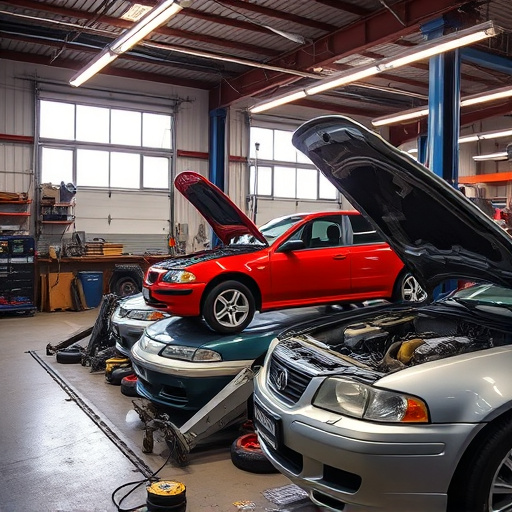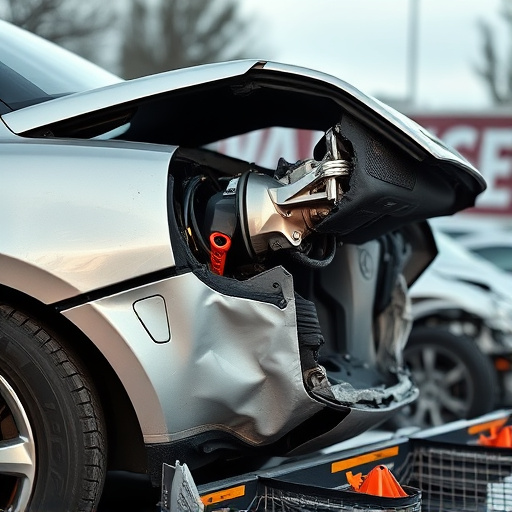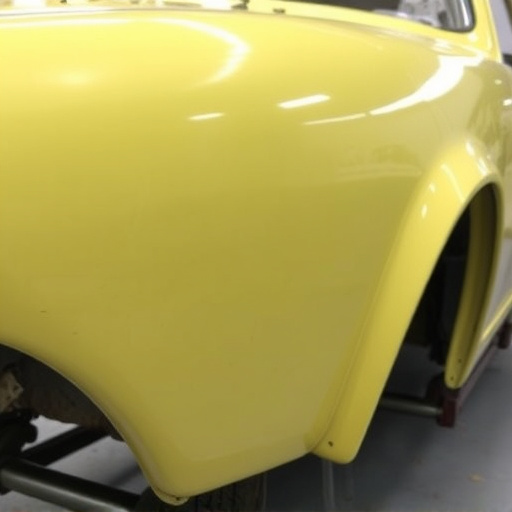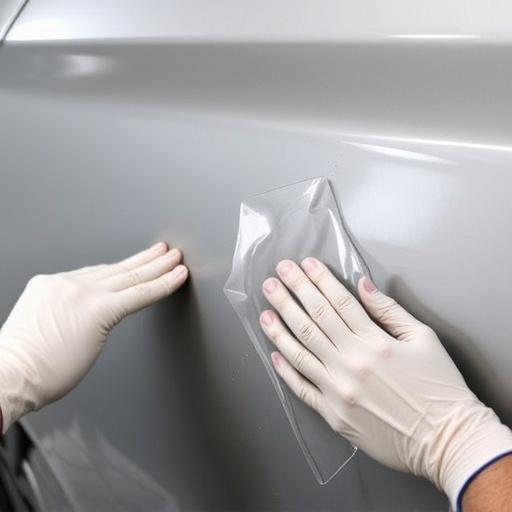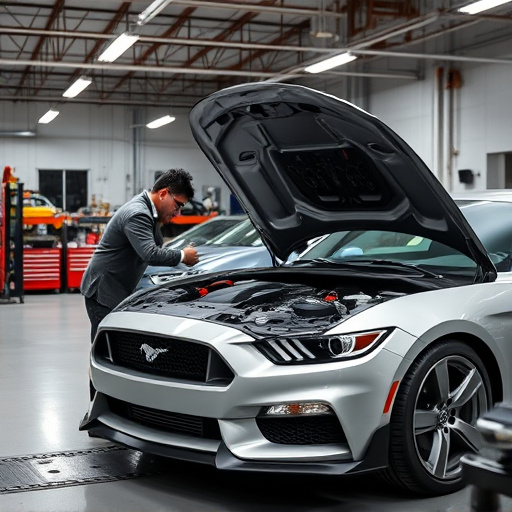Maintaining a Tesla Model S involves addressing body panel damage from minor collisions or parking incidents through readily available replacement parts and specialized services, along with regular thermal management system (TMS) checks. Skilled technicians assess and maintain radiators, fans, coolants, and heater cores to ensure optimal temperature regulation, enhancing performance, preventing wear, and ensuring safer driving in extreme climates. Comprehensive TMS inspections are crucial for both cosmetic repairs and peak thermal efficiency.
“Uncover the secrets behind ensuring your Tesla Model S maintains peak performance with our comprehensive guide to front end repairs and thermal management. Common issues plague electric vehicles, but understanding their causes is the first step to effective solutions. This article delves into identifying and addressing problems specific to the Model S’s front end, while highlighting the critical role of its thermal management system.
Learn how a thorough check can optimize your car’s cooling, preventing costly breakdowns. Discover practical steps to become your own mechanic, focusing on Tesla Model S front end repair.”
- Understanding Tesla Model S Front End Repair: Common Issues and Their Solutions
- The Role of Thermal Management in Tesla Model S Front End Repairs
- Step-by-Step Guide to Conducting a Comprehensive Thermal Management System Check
Understanding Tesla Model S Front End Repair: Common Issues and Their Solutions

When it comes to Tesla Model S front end repair, understanding common issues is key. This luxury electric vehicle is known for its sleek design, but like any car, it’s not immune to damage. One frequent problem involves body panels, such as fenders and bumpers, which can sustain dents or scratches from minor collisions or parking mishaps. Fortunately, these repairs are relatively straightforward, often involving replacing damaged components with new ones through specialized Tesla Model S front end repair services.
Another area of focus for thermal management system checks is ensuring the car’s cooling mechanisms operate efficiently. Extreme temperatures can affect battery performance and overall vehicle health. Regular inspections should include verifying the integrity of cooling fluids, checking for leaks, and examining fans and radiators. Addressing these issues through proper Tesla Model S front end repair and maintenance not only enhances the car’s appearance but also extends its lifespan, particularly in regions with harsh climates.
The Role of Thermal Management in Tesla Model S Front End Repairs

In the intricate world of Tesla Model S front end repairs, thermal management plays a pivotal role. Effective cooling systems are essential to ensure the longevity and performance of the vehicle’s components, especially during intense driving conditions or after collision repair services. Given the advanced technology integrated into Teslas, managing heat dissipation is crucial for maintaining optimal operational efficiency and preventing premature wear and tear.
When undertaking auto body restoration for a Tesla Model S, technicians must meticulously assess and address the thermal management system. This involves checking radiators, fans, and other cooling components to guarantee they function seamlessly. Proper maintenance not only enhances the car’s overall performance but also contributes to safer driving experiences. Skilled professionals in collision repair services understand this critical aspect, ensuring that every Tesla Model S leaves their shop ready to tackle any road condition with enhanced thermal resilience.
Step-by-Step Guide to Conducting a Comprehensive Thermal Management System Check

To conduct a comprehensive Thermal Management System (TMS) check on your Tesla Model S, follow this step-by-step guide tailored for front end repairs. Begin by inspecting the radiator and cooling fans for any signs of damage or debris buildup. Ensure the fans operate smoothly when engaged, as they play a crucial role in maintaining optimal engine temperature. Next, verify the condition of the thermostat and its operation; a faulty thermostat can hinder efficient temperature regulation.
Proceed to check the coolant levels and ensure there are no leaks within the system. Inspect the heater core for any blockages or damage, as this component is responsible for warming the cabin during colder months. Additionally, review the air conditioning (AC) unit’s functionality; a well-maintained AC system contributes to overall thermal management. If you’re performing front end repairs after a collision, consider these checks vital steps in preparing the vehicle for restoration, ensuring not just cosmetic fixes but also efficient thermal performance.
When it comes to addressing Tesla Model S front end repairs, understanding common issues and implementing effective thermal management solutions are key. By equipping yourself with knowledge about potential problems and following a structured thermal management system check, you can ensure optimal performance and longevity for your vehicle’s front-end components. Remember, proper maintenance and timely intervention are essential for any Tesla owner aiming to keep their Model S running smoothly in all seasons.


